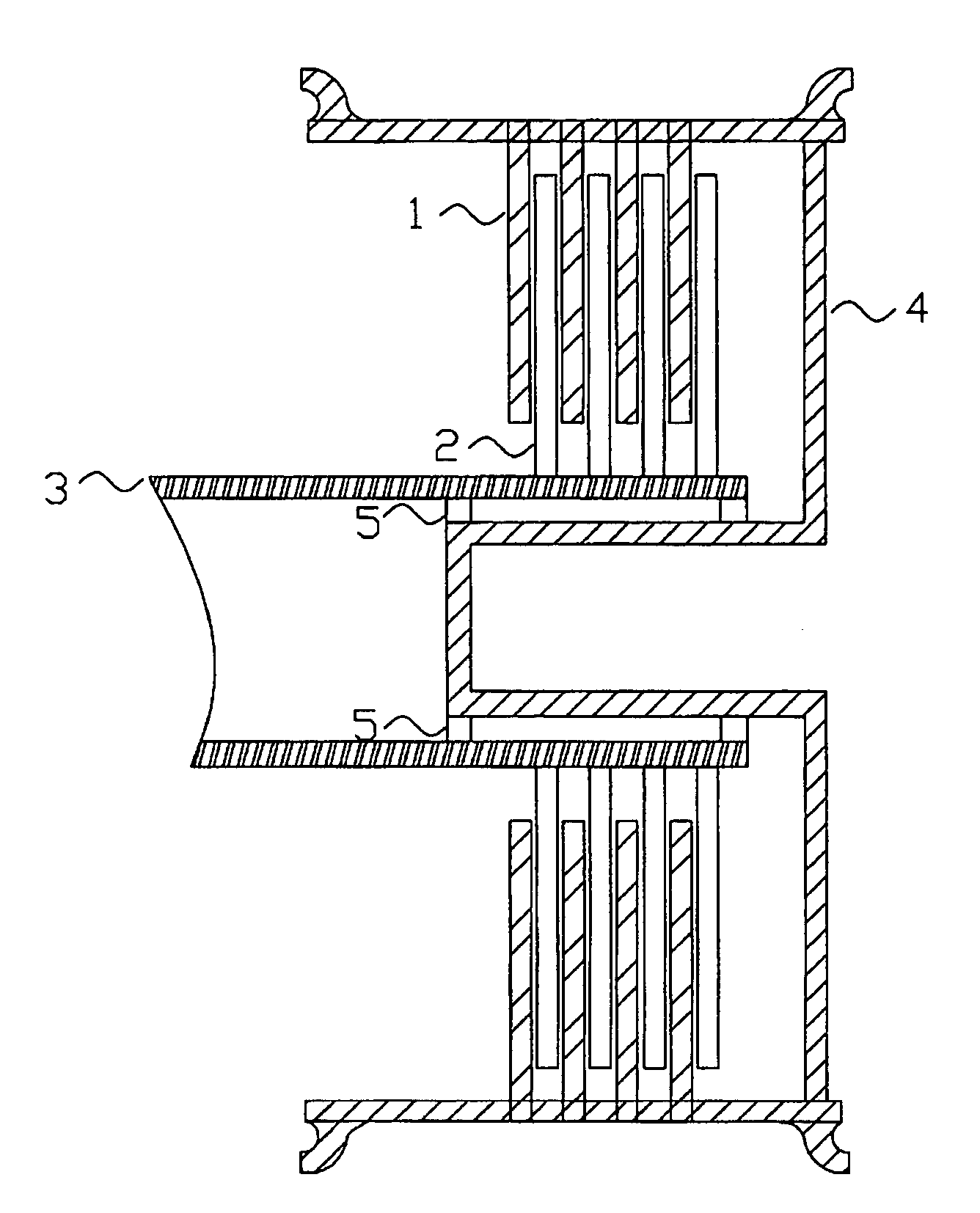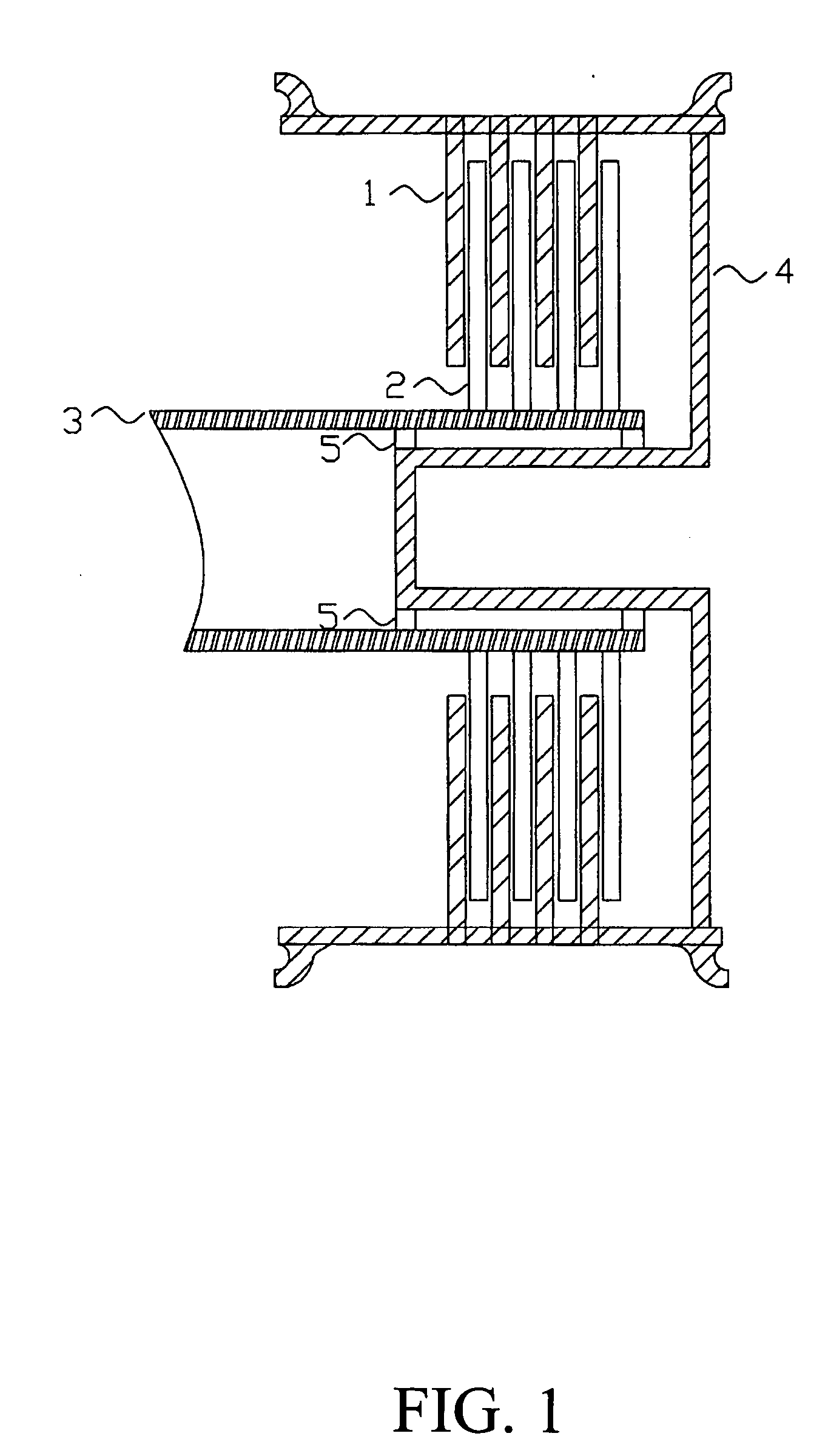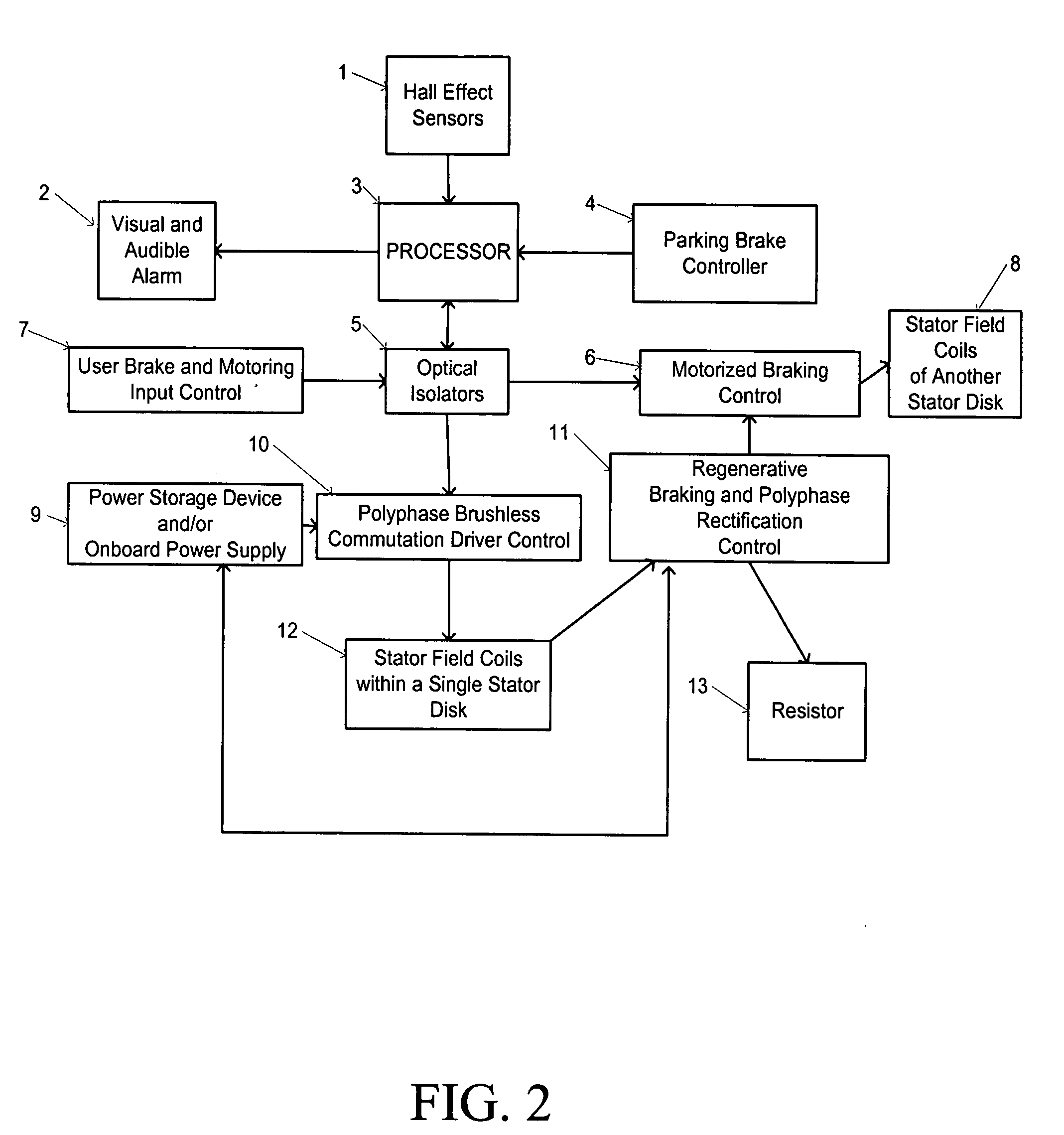Landing gear method and apparatus for braking and maneuvering
a technology for landing gear and braking, applied in the direction of braking arrangements of aircraft, electric devices, transportation and packaging, etc., can solve the problems of reducing braking capacity, increasing the volume of carbon material needed to absorb the same amount, and introducing wear of associated disks, so as to reduce design costs, improve design efficiency, and add flexibility to the design of aircraft landing gear
- Summary
- Abstract
- Description
- Claims
- Application Information
AI Technical Summary
Benefits of technology
Problems solved by technology
Method used
Image
Examples
Embodiment Construction
[0030]FIG. 1. Shows the cross sectional view of a possible disk stack axial flux type wheel hub motor / generator used to accomplish the needed electromagnetic braking and / or motoring of the landing gear wheels. The rotors 1 are coupled to the wheel 4 and rotate with the wheel 4. The stator disks 2, which may be constructed of an electrically conductive material, are coupled to the shaft 3 and / or central torque tube, and are stationary with respect to the wheel in which said disks are electrically isolated from each other except through available electrical connections (not shown). The rotor disks 1, which may be constructed of an electrically conductive material or may be constructed of permanent magnets, are coupled to the wheel 4. The wheel 4 is supported by means of a bearing set 5, which may be comprised of inboard and outboard bearing sets or a sleeve, air, or magnetic type bearing.
[0031] In the preferred embodiment, prior to touchdown the wheel 4 is motorized by applying power...
PUM
 Login to View More
Login to View More Abstract
Description
Claims
Application Information
 Login to View More
Login to View More - R&D
- Intellectual Property
- Life Sciences
- Materials
- Tech Scout
- Unparalleled Data Quality
- Higher Quality Content
- 60% Fewer Hallucinations
Browse by: Latest US Patents, China's latest patents, Technical Efficacy Thesaurus, Application Domain, Technology Topic, Popular Technical Reports.
© 2025 PatSnap. All rights reserved.Legal|Privacy policy|Modern Slavery Act Transparency Statement|Sitemap|About US| Contact US: help@patsnap.com



